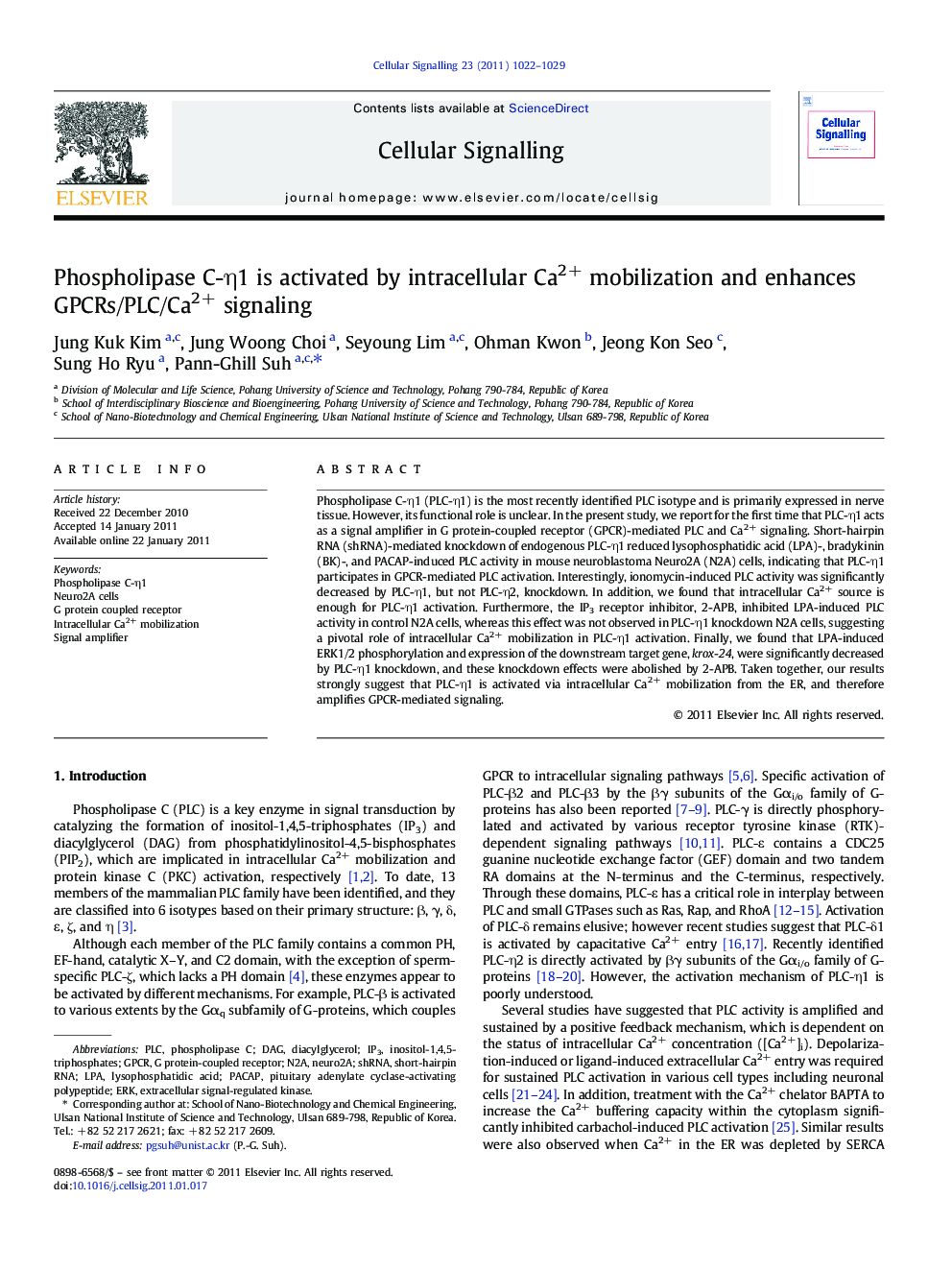| Article ID | Journal | Published Year | Pages | File Type |
|---|---|---|---|---|
| 1963731 | Cellular Signalling | 2011 | 8 Pages |
Phospholipase C-η1 (PLC-η1) is the most recently identified PLC isotype and is primarily expressed in nerve tissue. However, its functional role is unclear. In the present study, we report for the first time that PLC-η1 acts as a signal amplifier in G protein-coupled receptor (GPCR)-mediated PLC and Ca2+ signaling. Short-hairpin RNA (shRNA)-mediated knockdown of endogenous PLC-η1 reduced lysophosphatidic acid (LPA)-, bradykinin (BK)-, and PACAP-induced PLC activity in mouse neuroblastoma Neuro2A (N2A) cells, indicating that PLC-η1 participates in GPCR-mediated PLC activation. Interestingly, ionomycin-induced PLC activity was significantly decreased by PLC-η1, but not PLC-η2, knockdown. In addition, we found that intracellular Ca2+ source is enough for PLC-η1 activation. Furthermore, the IP3 receptor inhibitor, 2-APB, inhibited LPA-induced PLC activity in control N2A cells, whereas this effect was not observed in PLC-η1 knockdown N2A cells, suggesting a pivotal role of intracellular Ca2+ mobilization in PLC-η1 activation. Finally, we found that LPA-induced ERK1/2 phosphorylation and expression of the downstream target gene, krox-24, were significantly decreased by PLC-η1 knockdown, and these knockdown effects were abolished by 2-APB. Taken together, our results strongly suggest that PLC-η1 is activated via intracellular Ca2+ mobilization from the ER, and therefore amplifies GPCR-mediated signaling.
